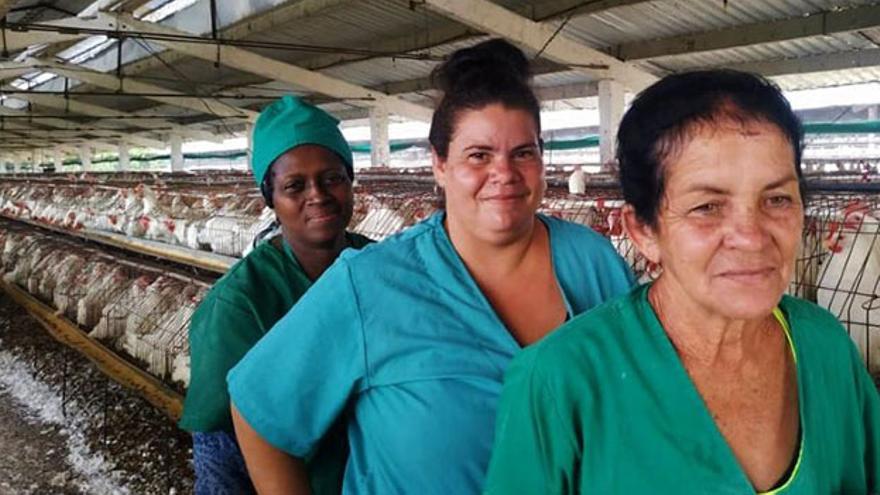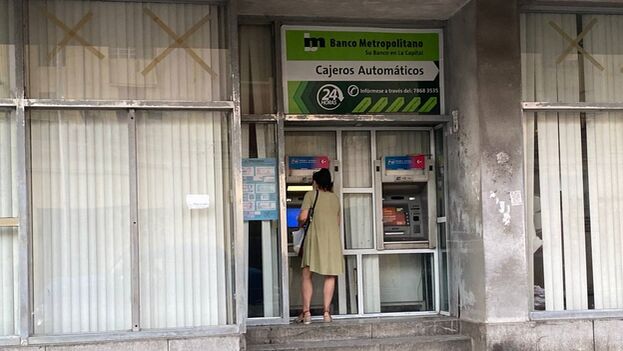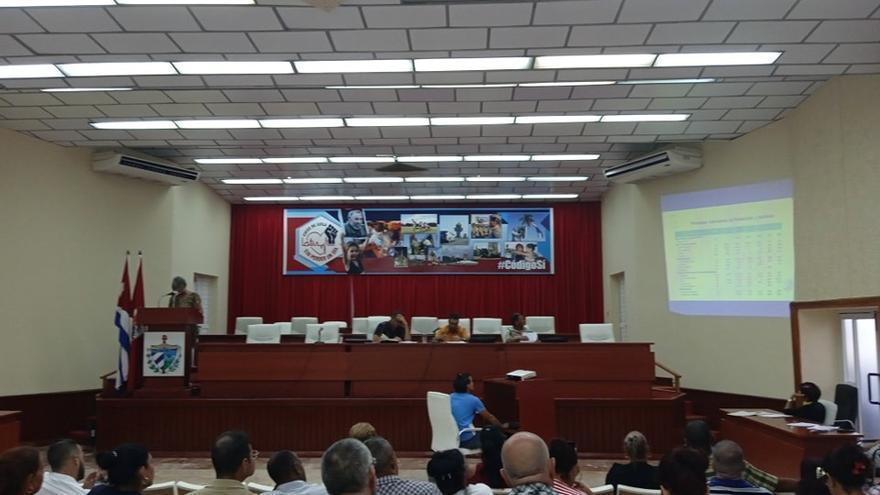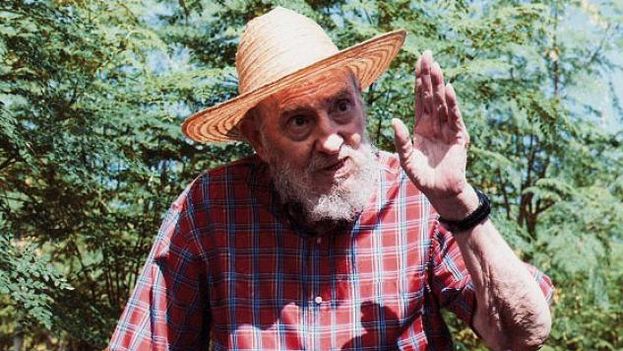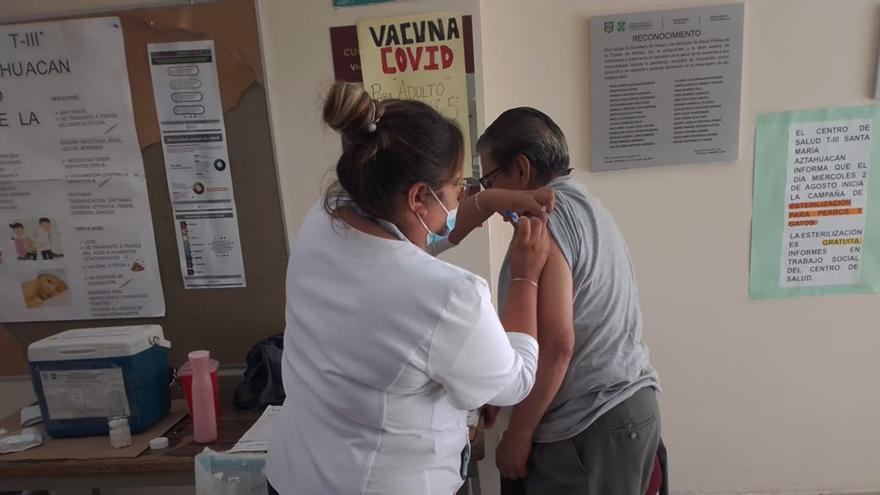This rule annuls the previous one of only two years and gives an idea of the monetary expansion produced on the Island by the uncontrolled increase in inflation. That 2021 rule regulated cash payments derived from a contractual relationship between Cuban state legal entities, and the payments of these and foreign legal entities to natural persons authorized to work independently and in non-state forms of management.
The new resolution recognizes that the increase in the use of cash in economic and financial transactions has caused a decline in the levels of banking and financial inclusion in the country, to which are added the high costs associated with its issuance, transport, processing and storage, as well as the growing demand for more ATMs for the extraction of cash. The regime feels overwhelmed and tries to regain control. And it offers precarious arguments to justify this new turn of economic policy.
Under such conditions, the new resolution requires that collection and payment operations that exceed the figure of 5,000 Cuban pesos be carried out through payment instruments and credit securities other than cash, and execution through electronic payment channels is prioritized. This means practically any transaction, given the low amount established. continue reading
Those subject to the resolution are state companies; higher business management organizations, budgeted units; non-agricultural cooperatives; agricultural cooperatives; agricultural producers; individual farmers; commercial fishermen; micro, small and medium-sized enterprises; local development projects; self-employed workers; artists and creators; the modalities of foreign investment and the associative forms created under the Law of Associations.
In other words, practically all economic actors are included in the regulation. And it is expressly stated that the provisions of the resolution are applicable to natural or legal persons not included in the previous relationship, if they carry out legally authorized commercial and service activities.
The mandatory use of payment instruments and credit titles other than cash — in particular, the means of electronic payments recognized in current banking legislation — is an organizational effort for many economic actors, especially the private and smaller ones. They will have to adapt to the requirements of the regime, despite the fact that their preferences for cash collections and payments of operations with the bank are usually organized with cash inflows and outflows, either directly and in person, or by means of a check or other payment instrument issued to be cashed by its beneficiary. This option becomes problematic with the new resolution, at least in the field of formal economics. But if they don’t comply, they can have their accounts confiscated.
In addition, the rule requires economic actors to guarantee their customers the access and use of electronic payment channels for the acquisition of goods and the provision of services, and payments arising from obligations to the state budget must be made through payment instruments and electronic payment channels from current accounts and for tax purposes.
To be clear, it’s an open and shut case. With this resolution, the regime intends to convert the Central Bank of Cuba into a conveyor belt for the transmission of orders from the executive to the banking system, for the withdrawal of funds in the accounts. And let no one be deceived, repression does not admit questioning. For example, the deadlines for the application of the rule are accelerated in a surprising way, because it is announced that the provision enters into force three days after its publication in the Official Gazette of the Republic of Cuba.
Some economic actors have felt trapped in a financial “corral” in poor taste, at the wrong time. The regime’s financial situation must be bad, very bad, so that overnight, in the dark and with treachery, the authorities gave an unexpected turn to their banking system, with consequences that can be dire for the economy.
And to make it clear that they are serious, the communist resolution warns that if the bank presidents, or the persons they delegate in writing, decide to suspend banking services or close the accounts to customers, “they repeatedly fail to comply with the provisions of the Third and Fourth sections of this Resolution.” Once again, arbitrariness is at the center of decisions: “repeatedly,” what it is, how many times, in what way.
That is, it’s not a joke but a full-blown threat to navigators, that you have to get ready to comply with what’s established, no matter how irrational and inefficient it may be. Or if not, be willing to lose everything. To emphasize here that this is a case of confiscation unrelated to the provisions of the communist constitution of 2019, where is the public utility or the social interest in these maneuvers of suspension or closure of banking services by the banking authorities? Castroism is showing its worst face once again.
And what do these two sections of the same old thing say that become a sword of Damocles?
The Third section provides that the cash income in Cuban pesos received by the subjects of the resolution as a rule must be deposited in their current accounts no later than the next banking business day from the date of its receipt. Why that precautionary delay, and what implications does it have on the operation of the actors? It is clear that the cash they deposit will not be available immediately.
On the other hand, in the case of non-state forms of management, there are more demands, because the deposit or payment is made in the account recognized for tax purposes to the National Office of Tax Administration, which has obvious effects of tax control and supervision. In addition, to make the deposits you can hire the services of the securities transfer companies authorized to carry out that activity.
Without prejudice to the provisions, the subjects of the resolution can agree with the bank, in the current account contract, on other deadlines for the cash deposit, but then certain conditions must be respected:
A) The extension of the term may not exceed 5 calendar days between one and the other deposit.
B) Every time the sum of the cash income received reaches the figure of 100,000 pesos (454 dollars, at the current exchange rate), the deposit must made on the next banking day.
Excepted from the provisions of the previous case are those in which the services of the securities transfer companies are contracted, whose terms are in accordance with what is agreed by the parties to the contract.
The subjects of this resolution who at its entry into force are not banking, after agreement with the bank and for a period of up to 6 months, can make cash withdrawals in Cuban pesos exceeding the limit of 5,000 pesos (22 dollars at the informal exchange rate), but in this case, the use is restricted to payments of: a) Wages, premiums, gratuities and other remuneration for workers, as long as there is no direct debit for payroll; b) Student loans; c) Alimony and child support; and d) medical diets. This covers only a small part of the social cash needs, and for only 6 months.
The Fourth section indicates that cash withdrawals for the payment of salaries, subsidies and other social security benefits and student benefits must be made, at most, 3 working days before the date established for payment. That is, one must notify with more time because otherwise, the money will not be available. Three days seems like an excessive term that overflows any rational financial planning, but in Cuba it is already known that everything that works is put at the service of state inefficiency.
In short, there are more limits and conditions. As if the above were not enough, the cash extracted from the branch for the payment of salaries, subsidies and other social security benefits and student loans, that are not paid to their beneficiaries within 7 bank working days following the date of payment, will be returned to the same branch on the next bank business day. Banks must include in current account contracts the terms and conditions set forth in this resolution for the deposit, extraction and holding of cash in national currency.
The executing arm of these measures is the Central Bank of Cuba, which should be independent of the regime, focused on the execution of an efficient monetary and financial policy. Surprisingly, it establishes a period of 30 working days, counted from the entry into force of this Resolution, in conciliation with the banks, the agencies of the Central Administration of the State and the provincial governments of People’s Power, to draw up a schedule for the incorporation of economic actors into the banking program.
The curious thing about this is that the communist state has cooked up this resolution with the banks, and once the schedule is completed, compliance will be demanded from the economic actors. Hierarchical decisions that turn their backs on reality usually go wrong. These will be a good example. And the haste of the regime resurfaces: the schedule cannot exceed 6 months, counted from the entry into force of this resolution, and is only renewable for those who subscribe for the term of up to 3 months.
What can one expect from this whiplash to the private sector? Well, many actors, especially the smallest and those with less capacity to assume the regime’s demands, will be able to opt for informal activity, concentrating their resources and priorities in that sector, in which it is easier to find what they need, and where it can even be generated at the same level as the foreign exchange market, a financial market that fills the shortcomings and demands of the state system. This Cuban private banking sector can be closer than ever and contribute to consolidating structures that at the moment can’t achieve due to communist obstacles.
Translated by Regina Anavy
____________
COLLABORATE WITH OUR WORK: The 14ymedio team is committed to practicing serious journalism that reflects Cuba’s reality in all its depth. Thank you for joining us on this long journey. We invite you to continue supporting us by becoming a member of 14ymedio now. Together we can continue transforming journalism in Cuba.
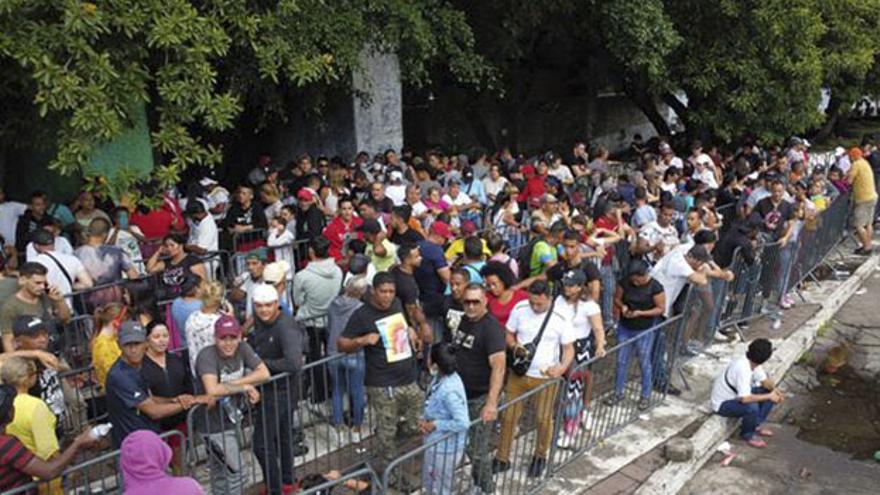
![]() EFE (via 14ymedio), Juan Manuel Blanco, Tapachula, 6 August 2023 — Restlessness and hope grow on Mexico’s border with Central America a week after Washington’s announcement about a new space in southern Mexico to process applications for asylum and employment of migrants seeking to go to the United States.
EFE (via 14ymedio), Juan Manuel Blanco, Tapachula, 6 August 2023 — Restlessness and hope grow on Mexico’s border with Central America a week after Washington’s announcement about a new space in southern Mexico to process applications for asylum and employment of migrants seeking to go to the United States.
